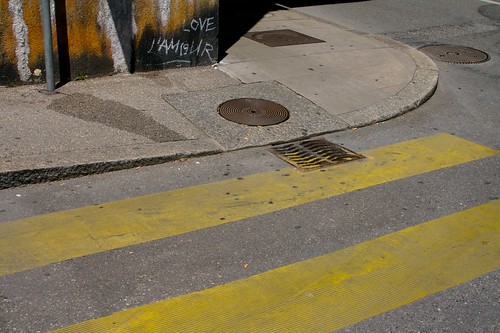 (Albert Robida's vision of the future in 1890)
(Albert Robida's vision of the future in 1890)
Last june, I participated in a panel at the i-realize conference in Torino with Bruce Sterling and Geoff Manaugh. The starting point of the discussion was a short presentation I gave which resulted from a workshop I organized the day before about how people move and interact in Torino and how this may evolve over time. As one can see on the video of the panel (apart from the fact that I am a bit stressed out because my VGA adapter is screwed), Bruce picked up on the results to describe his personal interests. He mentioned how as science-fiction writer, he was into "big futuristic things". But he also stated how as a tech journalist he fancies small details/improvements/additions/modifications in our daily life (exemplified by the booklet i did with Fabien).
He used the street example (see picture below) to describe how innovation can be very basic... like this curved sidewalk that allows people to roll up instead of having a big step.
Interestingly, reading Warren Ellis august column at Wired UK, I also find an echo to this discussion:
"The future bubbles up under the floorboards.
We spend a lot of time looking for our spaceships and jet-packs, but – and consider this bit, it gets bigger and weirder the more you think about it – in a matter of days we can genetically sequence a mutant virus that’s jumped the species gap. People try to make an ordinary thing of that. There’s a strong tendency to cast the present day, whenever that may be, as essentially banal and not what was promised. Stop looking for the loud giant stuff. The small marvels surround us."
Why do I blog this? referencing material about the balance between big futuristic things and ordinary change, interesting quotes to be re-used in my upcoming course about how to observe the world for design purposes. This discussion about small marvels directly connects with George Perec's notion of "Infra-ordinary".
